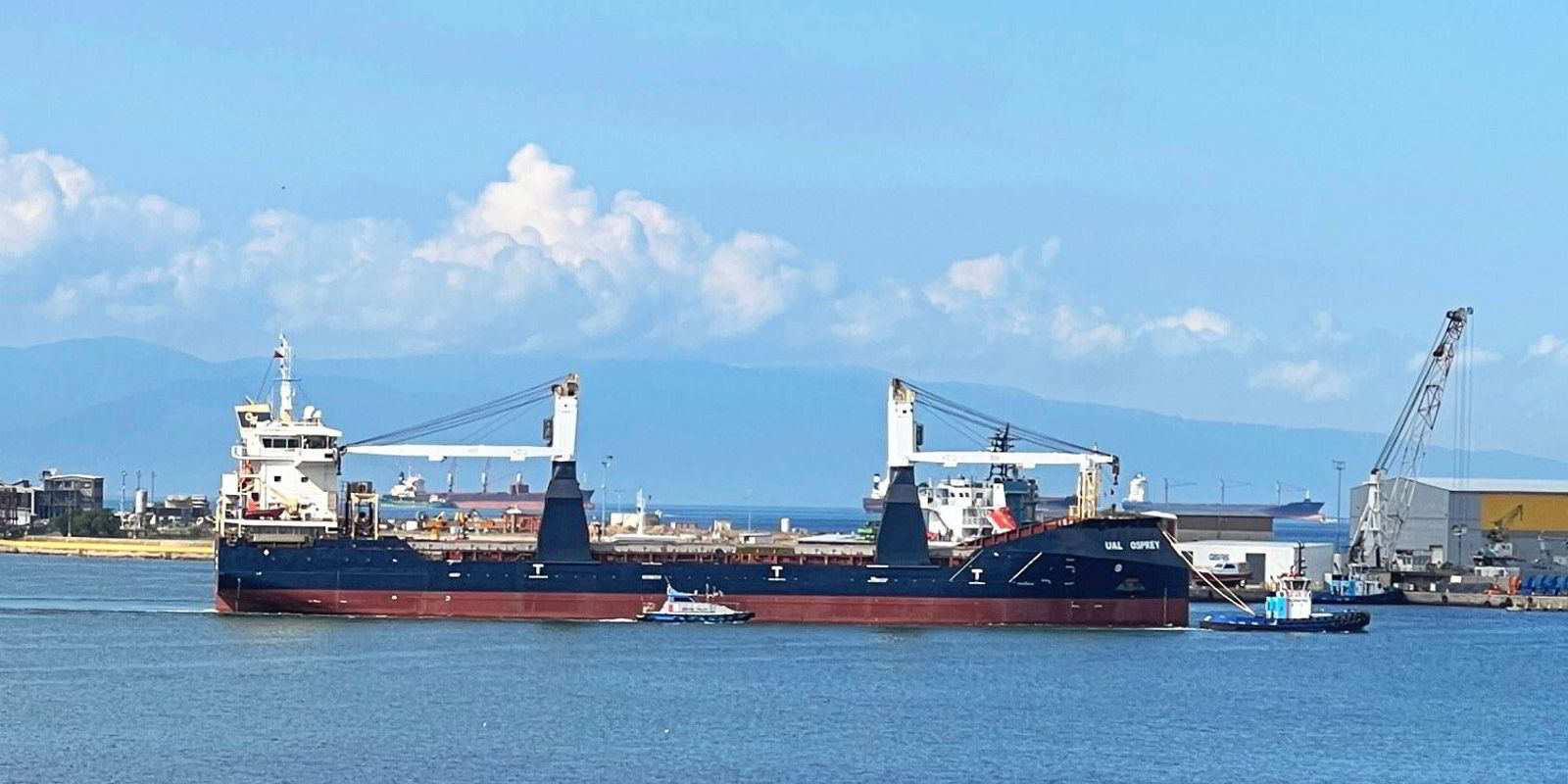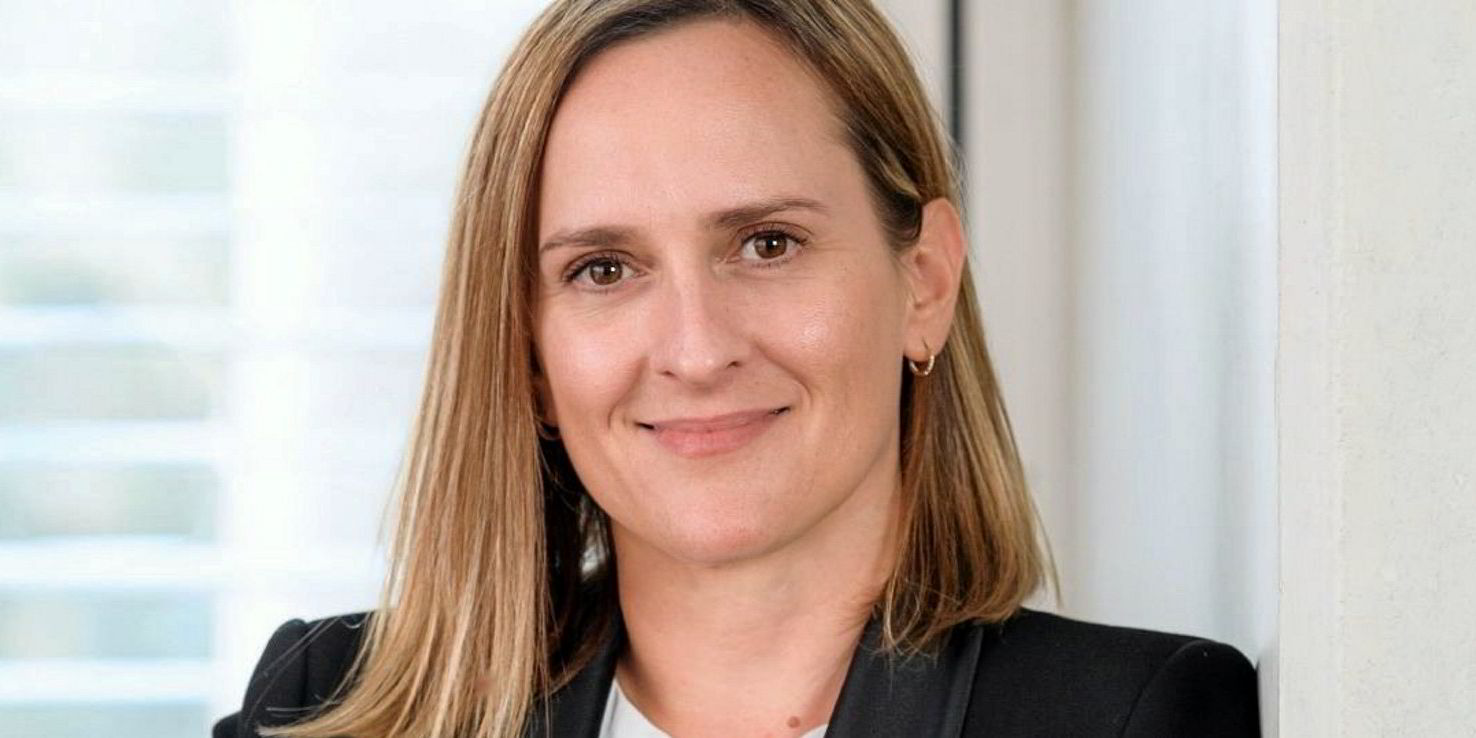ABB reached into the depths of the ocean for inspiration on its newest propulsion concept.
The Dynafin system — introduced in May — was inspired by a whale’s tail, replacing the classic propeller with a large wheel with blades attached. When moving, the turning of the wheel and the movement of the blades power the ship forward.
Development of the system started a decade ago, when decarbonisation was a lower priority for shipping, but promises more than 20% in fuel savings.
It is also one of a handful of outside-the-box ideas that ABB believes are necessary for the industry — currently looking high and low for simple to pie-in-the-sky ideas — to keep up with increasing emissions regulations.
“We have to be ready to take these kinds of leaps and then willing to implement innovative solutions not to stick only to the old traditional stuff,” ABB global line product manager Janne Pohjalainen told TradeWinds.
The Dynafin was one of nearly 70 concepts studied by ABB in an effort to break down marine propulsion to its most basic elements while reconsidering how it could be done better.
The Swiss-based company said the system is most effective for smaller ships, such as ferries, ro-ros, offshore supply vessels or yachts.
In addition to cutting a ship’s fuel bills — a finding from an independent study by OSK-ShipTech — ABB believes Dynafin will reduce vibrations and noise levels and offers superior manoeuvrability.
Pohjalainen said ABB was targeting the smaller ships in an effort to capture the higher volume of shipbuilding activity in those sectors while providing proof of concept for owners of larger ships and dealing with potential constraints on materials.
He added that with current bunker prices, the Dynafin system makes a compelling business case and that more expensive, alternative fuels such as methanol or hydrogen, would only strengthen it.
“Of course, if you double one parameter, a core parameter, then it gets better,” he said.
Elsewhere, similarly, offbeat concepts such as kite sails have been showing promise.
Different from some of the other wind-powered solutions, the Seawing system developed by Airseas is a 1,000-square-metre parachute-like sail that can be stored, deployed and retrieved from housing mounted on the bow of a ship.
When deployed, it flies in the air out front of the ship, pulling it forward.
Paired with routing optimised for the Seawing’s use, Airseas claims it can slash greenhouse gases by an average of 20% so long as the sail moves in a figure eight shape.
Called “dynamic flying”, the Seawing found that motion can boost the speed of the wind by as much as seven times while trialling the system on a Louis Dreyfus ro-ro earlier this year.
“There is a huge benefit for the kite from dynamic flight,” Airseas chief executive and co-founder Vincent Bernatets said in May, discussing the trial aboard the 21,500-gt Ville de Bordeaux (built 2004).
“That will get us to that average 20% of the engine power, which means at times it is [saving] 50% or even 70%, depending on the wind conditions, and at times zero when you don’t use it.”
Solar power could be an option, too, with multipurpose vessel operator Carisbrooke Shipping trialling a solar panel system developed by Grafmarine that can attach to any flat surface.

The trial saw the 8,700-dwt UAL Osprey (built 2012) outfitted with the system, which captures, stores and manages clean energy generation, during a voyage from Scotland to West Africa.
Carisbrooke said the trial provided “promising results” and that the system is a viable solution to decarbonisation demands with some modifications.
Decarbonisation solutions can even come from the ropes used aboard a ship.
Hendrik Veder Group said its UK and Dutch arms had recently trialled a project that saved 36,000 kilograms of CO2 emissions by recycling lifting and mooring cables.
Pohjalainen said the industry is more open to ideas such as the Dynafin than it was several years ago.
He said the system could push some of the rest of the industry to push forward with newer, more innovative ideas on decarbonisation.
“This is an enabler for creative thinking, out-of-box thinking for the wider perspective for vessel designs, propulsion at large,” he said. “This has already kind of initiated. We have seen some really interesting concepts from some major designers.”(Copyright)
Read more
- Evalend Shipping inks first LNG carrier orders at HHI
- Hoegh Autoliners shares rise on reports of another strong month
- Ship movements halted as key Russian Black Sea port attacked by sea drones
- Yangzijiang profit jumps 47% as focus turns to increased ‘green’ orders
- St Kitts strips flag from floating armouries after suspected sanctions breach






